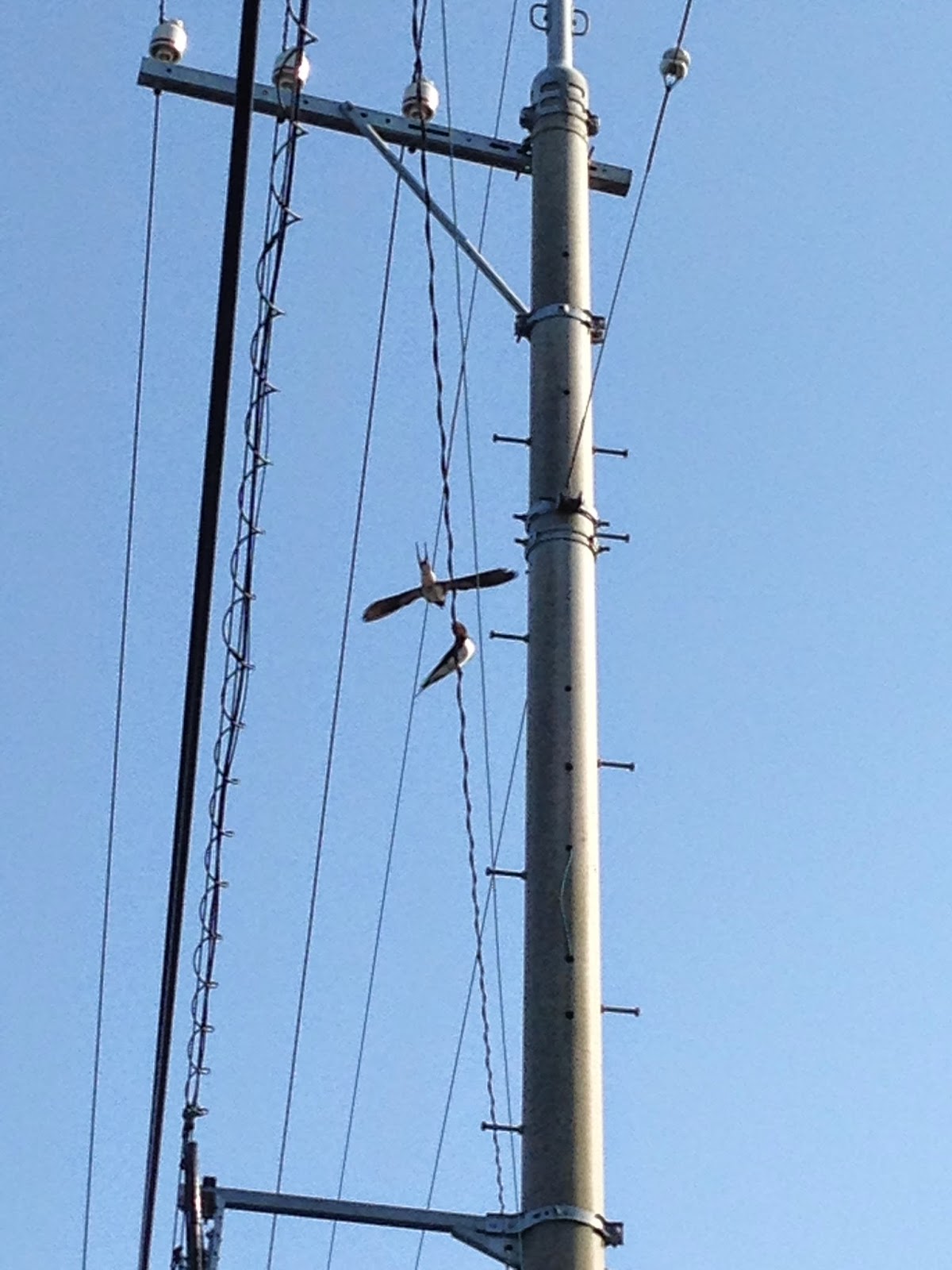Shichijuni-kou (72 Seasons) Calendar Listing
晩春 Banshun: "Late Spring"
Season No. 5: 清明, Seimei:
"Clear And Bright"
This time of year, the spring rain front is pushed down and away from the Japanese archipelago (at least the southern part of it) by cold northern fronts creating crisp, cool weather for all to enjoy. As light-pink sakura petals flutter down like faery snow, the tips of new leaves push out of their woody casings, covering nearby hills and mountains in a fresh cloak of misty green. Reveling in the warm sunlight, the heart can't help but heave a sigh of relief. Spring is here for sure.
Climate No. 13: 玄鳥至
Tsubame Kitaru:
" The Swallows Return"
(April 4 -April 8)
 |
| A passive swallow rests on an advertisement banner at Aisaikan Farmers' Market (Ohmi Hachiman, Shiga) |
Japan has several species of migrating swallow, but the barn swallow (Hirundo rustica, house swallow) its the most prevalent, with Japan and the Korean Peninsula as their major breeding grounds. Swallow nests can be spotted everywhere in Japan, from shopping mall entrances to public restrooms. Wherever the wall is textured or has a ledge, you can bet the industrious barn swallow knows exactly how to turn it into a fine, weatherproof home. Taking mouthfuls of mud from nearby riverbanks, rice fields and mud puddles, they dab it carefully to the wall, adding grass and weeds for bulk, building a sconce-shaped basket with a high ledge to keep out predators. Sheer genius.
 |
| Swallows about to leave their undersized nest (Toride Station, Ibaraki) |
"Swallow in the dusk…
Spare my little
Buzzing friends
Among the flowers."
-Matsuo Basho
Unfortunately, as Japan gets more "modernized" (i.e. more "westernized"), these little birds decrease in numbers year by year as a result. Biologists and birders alike believe this decline is due to a number of factors, including loss of habitat and competition from invasive species like starlings and carrion crows (as human garbage increases, so do the crows). In the suburbs, rice fields and crumbling, clay-walled neighborhoods are rapidly being replaced by huge expanses of concrete parking lot in the insane rush to make Japan look more like America. Managers of malls and shopping centers have also waged war on the poor swallow in the effort to keep their walls, sidewalks and customers' hair guano-free.
 |
| Swallows getting to know each other (Oshiba Island, Hiroshima) |
But there is hope. Long-revered in Japan as bringers of luck, barn swallows are renown for their ability to peacefully reside among humans. To have your home chosen by swallows as prime real estate traditionally meant peace and prosperity for all who reside within. Communities, schools and bird fans around the country are doing their part to ensure both good luck and the survival of the species. Some people even go so far as to allow swallows to roost in their kitchens!
The elderly and families with children in particular seem to understand the companionship and educational value a little brood of happy swallow chicks can bring. I personally can vouch for the joy of living alongside swallows. We had a birdhouse tacked onto the paper birch tree just outside our kitchen window for our little tree swallow family back in Alaska. They gave us many years of fun and lovely music. It warms my heart to know that the Japanese love them just as much as we do. I just hope that more of our species becomes aware of the negative impact modern living has on the other creatures we share this planet with.
And if we can only get them to stop dive-bombing kamikaze style in front of moving vehicles!
Flower of the Season: レンギョウ, Rengyo, Forsythia
More flowers are starting to bloom now than I can keep track of, but this one caught my attention for its purity of color. One of the most common flowering spring shrubs of South Korea, the forsythia blooms in bright yellow splendor along the highways and hedges of south central Japan.
 |
 |
| Forsythia blooming alongside plum and cherry trees (Nagahama, Shiga) |
Copyright 2014 Genkilee, Gen. All rights reserved. No part of this blog (written or photo content) may be reproduced or reprinted without the expressed permission of the author.



No comments:
Post a Comment